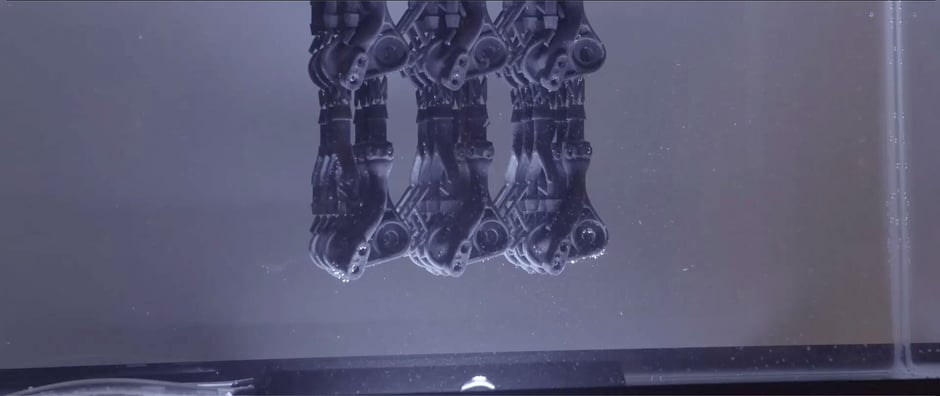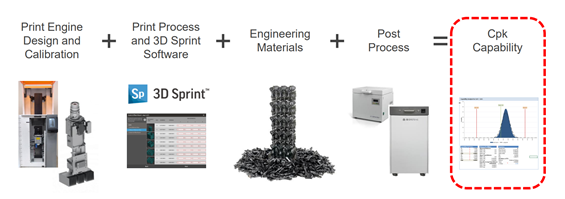
High Density Part Stacking – Supporting Batch-Run Productivity
"By stacking parts we are able to print in batches of 100, and have reduced the time it takes to prepare a build by 80%. The combination of stacking and production-grade materials makes Figure 4 ready for production."—Gregoire Mercusot, Materials Engineer, ADDLAB, Decathlon
Solutions to Boost Your Additive Plastics Productivity
Figure 4 Standalone
Ultra-fast and affordable for same day prototyping and low-volume production
Figure 4 Tough 60C White
White plastic for long-term use parts with a good combination of impact strength, elongation, and tensile strength
Figure 4 Tough 65C Black
Black plastic for long-term use parts with a good combination of impact strength, elongation, and tensile strength.
 The superior isotropic nature of 3D Systems' Figure 4 3D printing technology and materials allows for extra degrees of freedom in preparing parts for optimal print quality and print efficiency. As a result, parts do not need to be oriented in a special way to achieve the highest mechanical properties – which means parts can be tightly stacked for maximum space utilization and volume efficiency.
The superior isotropic nature of 3D Systems' Figure 4 3D printing technology and materials allows for extra degrees of freedom in preparing parts for optimal print quality and print efficiency. As a result, parts do not need to be oriented in a special way to achieve the highest mechanical properties – which means parts can be tightly stacked for maximum space utilization and volume efficiency.